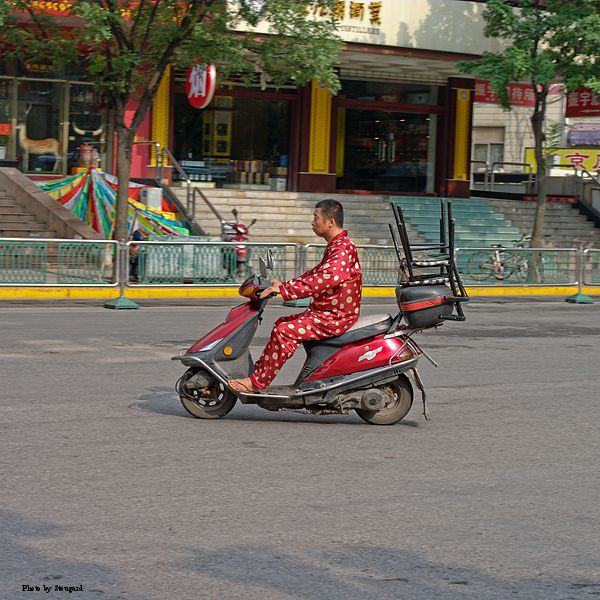Revolution and Counter-Revolution
Plinio Correa de Oliveira
Part I: The Revolution
Chapter I:
The Crisis of Contemporary Man
The many crises shaking the world today – those of the State, family, economy, culture, and so on – are but multiple aspects of a single fundamental crisis whose field of action is man himself. In other words, these crises have their root in the most profound problems of the soul, from whence they spread to the whole personality of present-day man and all his activities.
The Crisis of Contemporary Man
The many crises shaking the world today – those of the State, family, economy, culture, and so on – are but multiple aspects of a single fundamental crisis whose field of action is man himself. In other words, these crises have their root in the most profound problems of the soul, from whence they spread to the whole personality of present-day man and all his activities.
Chapter II:
The Crisis of Western and Christian Man
Above all, this is a crisis of Western and Christian man, that is, Europeans and their descendants, Canadians, Americans, Latin Americans, and Australians. We will study it especially as such. It also affects other peoples to the degree that Western influence has reached and taken root among them. In their case, the crisis is interwoven with problems peculiar to their respective cultures and civilizations and to the clash of these with the positive or negative elements of Western culture and civilization.
The Crisis of Western and Christian Man
Above all, this is a crisis of Western and Christian man, that is, Europeans and their descendants, Canadians, Americans, Latin Americans, and Australians. We will study it especially as such. It also affects other peoples to the degree that Western influence has reached and taken root among them. In their case, the crisis is interwoven with problems peculiar to their respective cultures and civilizations and to the clash of these with the positive or negative elements of Western culture and civilization.
Chapter III:
Characteristics of This Crisis
However profound the factors that diversify this crisis from country to country, it always has five major characteristics.
Characteristics of This Crisis
However profound the factors that diversify this crisis from country to country, it always has five major characteristics.
1. It is Universal
This crisis is universal. There is no people that is not affected by it to a greater or lesser degree.
This crisis is universal. There is no people that is not affected by it to a greater or lesser degree.
2. It is One
This crisis is one. It is not a range of crises developing side by side, independently in each country, interrelated because of certain analogies of varying relevance.
This crisis is one. It is not a range of crises developing side by side, independently in each country, interrelated because of certain analogies of varying relevance.
When a fire breaks out in a forest, one cannot regard it as a thousand autonomous and parallel fires of a thousand trees in close proximity. The unity of the phenomenon of combustion acts on the living unity that is the forest. Moreover, the great force of expansion of the flames results from the heat in which the innumerable flames of the different trees intermingle and multiply. Indeed, everything helps to make the forest fire a single fact, totally encompassing the thousand partial fires, however different from one another in their accidents.
Western Christendom constituted a single whole that transcended the several Christian countries without absorbing them. A crisis occurred within this living unity, eventually affecting the whole through the combined and even fused heat of the ever more numerous local crises that across the centuries have never ceased to intertwine and augment one another. Consequently, Christendom, as a family of officially Catholic states, has long ceased to exist. The Western and Christian peoples are mere remnants of it. And now they are all agonizing under the action of this same evil.
3. It is Total
In any given country, this crisis develops in such a profound level of problems that it spreads or unfolds, by the very order of things, in all powers of the soul, all fields of culture, and, in the end, all realms of human action.
In any given country, this crisis develops in such a profound level of problems that it spreads or unfolds, by the very order of things, in all powers of the soul, all fields of culture, and, in the end, all realms of human action.
4. It is Dominant
Considered superficially, the events of our days seem a chaotic and inextricable tangle. From many points of view, they are indeed.
Considered superficially, the events of our days seem a chaotic and inextricable tangle. From many points of view, they are indeed.
However, one can discern profoundly consistent and vigorous resultants of this conjunction of so many disorderly forces when considering them from the standpoint of the great crisis we are analyzing.
Indeed, under the impulse of these forces in delirium, the Western nations are being gradually driven toward a state of affairs which is taking the same form in all of them and is diametrically opposed to Christian civilization.
Thus, this crisis is like a queen whom all the forces of chaos serve as efficient and docile vassals.
5. It is Processive
This crisis is not a spectacular, isolated episode. It constitutes, on the contrary, a critical process already five centuries old. It is a long chain of causes and effects that, having originated at a certain moment with great intensity in the deepest recesses of the soul and the culture of Western man, has been producing successive convulsions since the fifteenth century. The words of Pius XII about a subtle and mysterious enemy of the Church can fittingly be applied to this process:
This crisis is not a spectacular, isolated episode. It constitutes, on the contrary, a critical process already five centuries old. It is a long chain of causes and effects that, having originated at a certain moment with great intensity in the deepest recesses of the soul and the culture of Western man, has been producing successive convulsions since the fifteenth century. The words of Pius XII about a subtle and mysterious enemy of the Church can fittingly be applied to this process:
It is to be found everywhere and among everyone; it can be both violent and astute. In these last centuries, it has attempted to disintegrate the intellectual, moral, and social unity in the mysterious organism of Christ. It has sought nature without grace, reason without faith, freedom without authority, and, at times, authority without freedom. It is an “enemy” that has become more and more apparent with an absence of scruples that still surprises: Christ yes; the Church no! Afterwards: God yes; Christ no! Finally the impious shout: God is dead and, even, God never existed! And behold now the attempt to build the structure of the world on foundations which we do not hesitate to indicate as the main causes of the threat that hangs over humanity: economy without God, law without God, politics without God.[3]
This process should not be viewed as an altogether fortuitous sequence of causes and effects that has taken place unexpectedly. Already at its inception, this crisis was strong enough to carry out all its potentialities. It is still strong enough to cause, by means of supreme upheavals, the ultimate destructions that are its logical outcome.
Influenced and conditioned in different ways by all sorts of extrinsic factors (cultural, social, economic, ethnic, geographic, and others), it follows paths that are sinuous at times. It nonetheless never ceases to progress toward its tragic end.
Plinio Corrêa de Oliveira, Revolution and Counter-Revolution (York, Penn.: The American Society for the Defense of Tradition, Family, and Property, 1993), Part I, Ch. 1-3, pp. 7-14.





